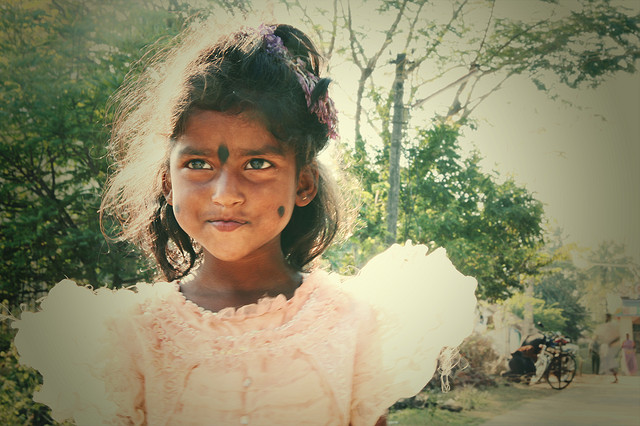*Eleditor’s note: Elephant is a diverse community of nine million readers and hundreds of writers (you can write too!). We are reader-created. Many blogs here are experience, opinion, and not fact or The One Right Point of View. We welcome all points of view, especially when offered with more sources and less invective, more frankness and less PR. Dislike this Op-Ed or opinion? Share your own take here.
A tale of two Indias: one of the ancient, rich and glorious land of great emperors, Taj Mahal and yogis surrounded by mysticism and wonders.
The other tale shows India’s common reality—poverty, abuse of women, child slavery, disease and an ever-increasing population. In the next 15 years, India will surpass China in being the world’s most populous nation.
I started traveling in India four years ago. In July of this year, I completed my fourth trip to this mystical country which has always had a great appeal to a different kind of tourists. Even though I am used to seeing trash in the streets, overcrowded trains and greedy bellboys, each time I visit India, it amazes me with something new.
Reflecting on all my trips and visits there, I compiled a list of nine tips for (western) tourists:
1. Barefoot pilgrimages by Shiv bhaktas (devotees of Lord Shiva) during the auspicious month of Sravan (July/August).
At this time, India turns orange with orange-clad men (and sometimes women, too) carrying bamboo sticks with pots filled with water from the Ganges. They carry it all the way from the river to the Shiva temples and have to keep it from spilling along the way.
The final goal is to pour the holy water into one of the temples as an act of spiritual dedication. On their T-shirts you can see a sign that reads “Bam Bol”—one of Lord Shiva’s names. They often sing devotional songs (kirtans), during their pilgrimage.
It is a curious sight for the foreigner’s eye—countless men in orange walking tirelessly and barefoot, with two sticks on their arms, in the streets and on trains. In some towns, traffic is blocked or redirected so that devotees can reach their destination–the temple.
After the pilgrimage, they return to their homes. It is a challenging task, as they have to walk a very long distance. Pilgrims are accompanied by friends, families and neighbors. According to Hindu tradition, whatever one wishes for during this pilgrimage, Lord Shiva will make it come true. In the month of Shravan, it is nearly impossible, especially for foreigners, to visit a Shiva temple because of the crowds of thousands of devotees.
2. Indians tend to be tech lovers.
They love all high-tech gadgets—iPads, smartphones, you name it. I was astonished that even in the poorest rural state in India, Jharkhand, where locals had no shoes and barely anything to eat, they were all equipped with mobiles in their hands. According to surveys, India is the fastest growing smartphone market in the world. By the end of the decade, the total number of Indian smartphone users will be in the 520 millions.
3. The poorer an Indian family is, the more children they are likely to have.
This is quite odd and difficult to comprehend by westerners. Once, an Indian swami (a yogi) explained to me why Indians have so many children. She said they believed that at least one of their children would get rich and lift them out of the poverty. This is why poor villagers give their babies powerful names very often, such as Rani (queen) or Raj (king) in hope of their children obtaining wealth.
4. Aggressive monkeys.
In India, and Delhi in particular, monkeys are an infamous presence for the trouble they cause—stealing from locals and tourists, and occasionally biting, too. There were even cases with fatal consequences with quite a few people being seriously injured by them. Still, people feed monkeys, especially on Tuesdays and Saturdays because, according to Hindu tradition, monkeys epitomize the cherished Hindu God Hanuman. Tribes of walking monkeys near railway stations are a very common sight.
5. There are no traffic rules in India except for left-hand driving and constant honking by all drivers.
Even the smallest movement when driving should be preceded by a honk. However, there are always exceptions. When I was in a cab in July, much to my surprise, the driver did not honk even once. Lavishly decorated vehicles with pictures of Hindu deities and mantras appear everywhere and prove to be a great curiosity for tourists. Every vehicle has at least a small statue or murti,a Hindu God or a Goddess to protect the driver from the visible and invisible misfortunes that lurk on the road.
6. Although in the Hindu religion Devi, a collective name for a female Goddess, plays a significant role and is worshipped on a daily basis by both men and women, harassment (and violence) towards women is common.
It is really dangerous for any woman, whether Indian, a fair-skinned or dark-skinned westerner, to be outside after dark. This was the advice given to my mother from a local Indian man when she was doing some sightseeing in Delhi. The middle and upper class have adopted a more western attitude and so foreigners may feel safer in their company.
Since it is not recommended for women to travel by public transportation with only male passengers riding, the local authorities have allocated the first two segments of the Indian subway trains to be used by women only. There are public announcements in pink that read “Women Only” on the subway platform.
7. Train delays.
This is very inconvenient and causes a lot of trouble, especially if you have to make other transport connections and you are short of time.
Traveling on an Indian train is a commendable act. There are many beggars, thieves, perverts and trash in the trains, as well as food being offered frequently from merchants. When passengers finish their meals, they throw away their leftovers right on the floor. On top of that, in winter trains are usually very late because of fog and can even get canceled. I once had an experience with a train which had a delay of over 18 hours and it was very nerve-wracking trying to make it on time for my flight.
8. Extreme climate.
India is famous for its diverse landscape which explains the considerable temperature amplitudes endemic to the country —boiling heat in the valleys in summer and freezing winters in the Himalayas.
If you wish to climb mountains or visit the holy Manasarovar Lake—a great pilgrimage location in current Tibet, the best time to do so is in June or July. Traveling to Delhi or central and south India is best from October to March when the weather is mild and the sun is not burning. However, always consider carrying a few electrolytes (hydrating salts to drink) in your bag at all times to help you cope with the heat.
9. Indians love color.
They often use vibrant colors to decorate their homes and cars, in the clothes they wear (especially women), and when they organize weddings.
Bollywood’s most iconic style is right there in your face at every corner. No wonder one of the most beloved festivals in India is Holi, the festival of colors. People paint their friends’ and neighbors’ faces in different colors; everyone dances and sings, and all bickering subsides when people forgive each other to celebrate the victory of good over evil.
I experienced my first Holi celebration at my Guru’s ashram in March 2012. All residents, guest and swamis together with our Gurus were dancing, singing and painting each other’s faces. It is a time when you can feel the genuine spirit of India, free of poverty, trash, beggars or rapists. It throbs with the energy of love, peace, joy and unity in diversity. And that, I can testify, is the true face of India.
India remains a land of mysticism, spirituality and Gurus no matter what your beliefs may be. Whenever I share my experiences from India with friends, the reactions usually divide people into two groups: one that is amazed and hopes to visit India one day, too, and the other one that would never go there because of danger, diseases and the severity of the climate.
Which group do you belong to?
Love elephant and want to go steady?
Sign up for our (curated) daily and weekly newsletters!
Editor: Renée Picard
Photo: vinothchandar at Flickr Commons







Read 4 comments and reply